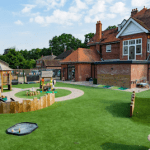



One question that I know that a lot of parents ask themselves from time to time is: am I doing the right thing by my children? Am I giving them enough time to play? Am I buying the right stuff for them to play with? When I play with my children, am I doing it in the right way to help support their long-term development?
In this article about play, I’m going to argue a few different things. The first is that play is absolutely vital for children’s brain development – and that they use spontaneous play to challenge and develop their brain connections, through a process that I’ll explain about which is known as Bayesian learning.
The second is that you don’t need to sweat as a parent – children are great at working out for themselves what type of play they need. There’s no single right way to play – how children play need varies a lot depending on what stage of development they’re at. The best thing that you can do as a parent is watch what your child is spontaneously doing, and take the child’s lead by observing closely what they’re doing and showing interest.
The third is that play is definitely not about buying them stuff. In fact, for young children in particular, you definitely won’t want them to have too many toys, or toys that do too many different things. Again, I’ll explain the reasons why this is as we go.
I’m going to start by listing a few different ways in which I’ve noticed children of different ages playing, spontaneously, on their own. These might not be things that strike you as examples of play – but I’ll be explaining why I think that they all are, and how they all drive children’s brain development.


The first example comes from some work that one of my PhD students Tom is doing at the moment. He’s observing how children of different ages play with Duplo. You give the exact same objects to children of different ages, and it amazing how they do completely different things with them. A 4-year-old might stick the bricks together into a rough car shape and fly it around the room, saying that they’ve made a spaceship. But a 3-year-old is more likely just to pick out the square blocks and assemble them into one a big vertical tower. A 12-month-old, with the exact same blocks, will happily sit and just bang them together.
The next two examples come from when we were filming the Channel 4 show the Secret Life of 4-, 5- and 6-year-olds. For this, we were listening to a lot of child-on-child conversations.
There was a lot of talk about friendship, and often it came across to us listening as incredibly abrupt. A five-year-old might say to another five-year-old who they’d just met, out of the blue, ‘do you want to be my best friend?’. And then 20 minutes later, again completely unprovoked, say ‘you’re not my friend any more’. It was hurtful for the child listening, to be sure, but how does this count as play? I’ll get to that…
Another example from the same show is that one season we had a school with a playground with a slide in it. We had one week of filming with 4-year-olds, and then another week watching 6-year-olds in the same playground. Again, the way that they played in it was so different! For 4-year-olds, all they wanted to do was run up the steps and then slide down the slide, over and over again. With 6-year-olds, though, in the same playground, I don’t think that I once saw them slide down that slide. For them, all they wanted to do was run up it! What caused such an abrupt shift? Again, bear with me, I’m getting to it…!
And then the last example that I want to give, before I explain what I think links all these examples together, comes from my own life. One Sunday, about 10 years ago, when I was taking my sister’s three kids out for the day, before I had my own kids. We’d driven to a big countryside park for the day. But when we arrived my niece Leah, who must have been seven or so at the time, just announced out of the blue that she wanted to stay in the car the whole day, and that she wasn’t getting out. I didn’t really know what to do, so I decided just to play along – I pointed out where, on the other side of the car park, I was going to take her brother and sister, showed her how to lock up the car and come and find us if she wanted. We didn’t get far away before she’d changed her mind.
So what links together these different examples that I think are all types of children’s play? And how does this drive their brain development? OK – so one of the big mechanisms that we think drives brain development in children is a process known as Bayesian learning. In Bayesian learning, you make a prediction about what will happen if you do X, and then you do X, and then you test whether your prediction was right or not. The best learning happens when you’re wrong in your predictions – but only a little bit wrong, so that you can learn, recalibrate, and make a better prediction next time.
As we get older, and as our brain wiring develops, our brain gets more efficient at making predictions. A young baby’s brain is pretty terrible at making predictions, so the types of things that they learn from are super simple, and super repetitive. Like a child, banging two Duplo blocks together. Each time they do this their brain is predicting that there will be a sound following on from a motor movement – but because their brains are so young, and so unreliable, they can’t make even a simple prediction such as this very effectively; but by doing the same thing over and over, they gradually get better. (This is the same reason, by the way, as why young children like to watch the same TV shows over and over again, and why they like to eat the same food over and over).
By 3, their brains have got more efficient at predicting a noise based on a sound, and so they don’t learn so much from this anymore, and they stop doing it.
But stacking blocks together – working out how they need to position their hands to get two blocks to stick – is hard, even if they’re just making a simple vertical tower. So this is what they do, over and over again. By 4, they’ve got better at this so they start doing other things, like starting interactions with other people around their Duplo play, that will also allow them to make predictions that are sometimes but not always right, so they can learn.
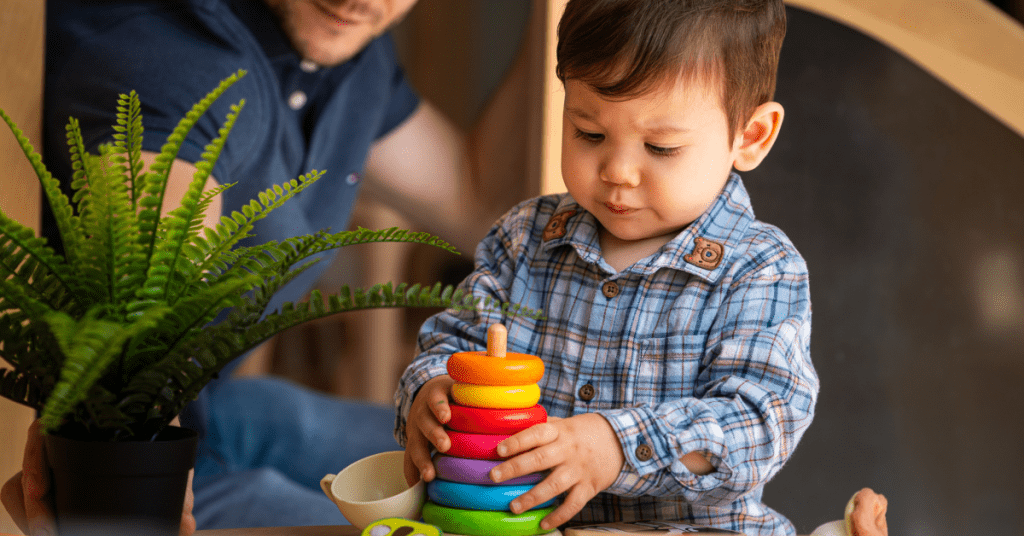

For the example of the slide in the playground I gave, it’s exactly the same explanation. At 4, just walking up steps and then sliding down the slide is enough – they still sometimes get it wrong (walking up steps is hard) – so they’re happy doing this again and again, until their brains get better at it. Whereas by 6, that’s too easy, so they start to seek out a new challenge.
But what about the other examples I gave though, of children abruptly starting and ending friendships, and my niece refusing to get out of the car? For me, the first example was about children trying to learn what friendship is (it’s a pretty hard, abstract concept for a 4-year-old, if you think about it). And the way that they were doing this was by creating a situation – either by announcing that someone was their best friend or saying ‘you’re not my friend any more’ – and then seeing how that person would react. You predict how they’ll react, see how they actually react, and from that you gradually work out what this word ‘friendship’ means. It’s exactly the same as the processes that drive play and learning with younger children. Similarly, my niece, who knew me quite well by that time, was trying to create a situation where she wasn’t sure whether her prediction as to how I’d react was right or not – and using that to learn about me.
So what does all this mean for parents? I suppose just that you don’t need to sweat about your child’s learning through play. Young children’s brains are built for learning – it would be a job to stop them if we could! – and they’re also very good at figuring out what types of play they need to do to learn the most that they can.
For young children, whose brains are noisy and inefficient at making predictions, they need to be doing the same thing over and over again, in simplified, stripped-down environments. At this early stage of development, they’ll generally learn best from things that are super simple, like doing the same action, such as banging a spoon on a table, over and over again. But they’ll manage this for themselves, given a chance. If you’re a parent, as many are, who is ambitious for their children, and want them to turn out well, it can be tricky to remember that the slower they go during early learning – the more repetitious their play is, the more simplified their environments so they can really focus on one thing at a time, the faster they might be learning later on.
Older children, who’re past that early learning phase, will probably benefit from a different type of learning. If you find your child doing unusual things that are suddenly different to how they normally behave at home – such as refusing to do something that they’ve happily done countless times before – then it’s important to remember that this is play too, and it’s part of their learning. And that in both of these cases – from the limited, repetitious banging of a young baby through to an older child ‘stepping outside the box’ at home – the brain learning mechanisms that drive these behaviours are actually the same.


Child Development Expert




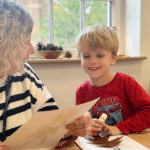

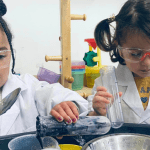

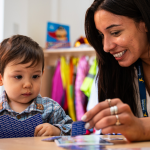

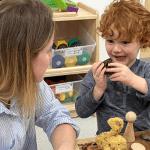

View All
This website uses cookies so that we can provide you with the best user experience possible. Cookie information is stored in your browser and performs functions such as recognising you when you return to our website and helping our team to understand which sections of the website you find most interesting and useful.
You can read out full privacy policy here
Strictly Necessary Cookie should be enabled at all times so that we can save your preferences for cookie settings.
If you disable this cookie, we will not be able to save your preferences. This means that every time you visit this website you will need to enable or disable cookies again.